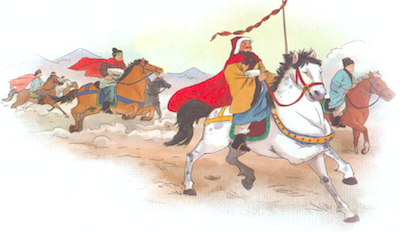Source: Paper Republic (10/8/19)
Silk Road Tales: A Look at a Mongolian-Chinese Storybook
By Bruce Humes

The new emperor’s Belt & Road Initiative has already resulted in scores of contracts for highways, railways and port construction in Central Asia, Southeast Asia and even East Africa. Perhaps less well known is China’s solidly financed soft power campaign that aims to create or translate, publish and disseminate texts in the languages of the “Silk Road” peoples — land- and sea-based — that relate to the history of the ancient trade routes. This post features the tale of Zhang Qian, diplomat and explorer of the “Western Realm” during the reign of Emperor Wu of Han (141-87 BCE). It is one of a bilingual picture-book series aimed at children aged 5-6 who live in Inner Mongolia.To facilitate comparison, the blogger has provided the text in three languages, five scripts: the original Chinese and Inner Mongolian script (vertical); Hanyu Pinyin; Cyrillic Mongolian (used in the Republic of Mongolia); and a translation of the text into English.Students of Chinese and Central Asian history may note that one related “episode” has been left out of this rendition. As noted in the storybook, after years of imprisonment at the hands of the Xiongnu, Zhang Qian escaped and was welcomed by the ruler of Da Yuan. We learn that “With the help of the king of Da Yuan, Zhang Qian visited many countries and gained a great deal of knowledge of the culture and geography of the countries of the Western region.”Da Yuan (大宛) was likely a reference to Ferghana Valley famous for its “blood-sweating horses,” a fact that Zhang Qian reportedly revealed to his emperor upon return to China. As noted in the Chinese-language Baidu Encyclopedia, the emperor was keen to possess a herd of these fine steeds, but when refused, he sent an army that killed the king and reduced Da Yuan to a vassal state.A history lesson that some of the PRC’s lesser partners in Central Asia might do well to revisit . . .